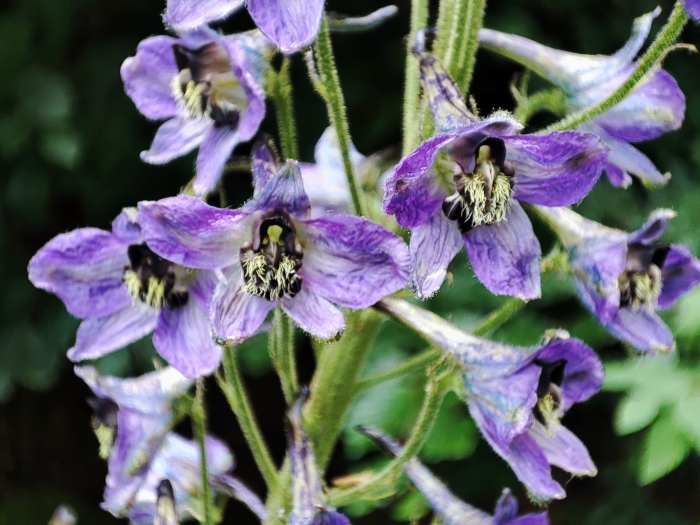Alpine Delphinium
(Delphinium elatum)
Alpine Delphinium (Delphinium elatum)
/
/

© xulescu_g
CC BY-SA 4.0
Image By:
© xulescu_g
Recorded By:
Copyright:
CC BY-SA 4.0
Copyright Notice:
Photo by: © xulescu_g | License Type: CC BY-SA 4.0 | License URL: http://creativecommons.org/licenses/by-sa/4.0/ | Uploader: xulescu_g | Publisher: iNaturalist |

























Estimated Native Range
Summary
Delphinium elatum, commonly known as alpine delphinium or candle larkspur, is a perennial herb native to alpine and subalpine regions across temperate Asia and Europe. It can grow up to 6 feet tall and is characterized by its deeply divided, dark green leaves. The plant produces showy spikes of blue or purple flowers in the summer, which are highly attractive to pollinators such as bees and butterflies. Delphinium elatum is particularly noted for its vertical accent in the garden and its vibrant flower colors.
In cultivation, alpine delphinium is valued for its tall, striking flower spikes and is often used in borders, cottage gardens, and cut flower gardens. It prefers full sun but can tolerate part shade, and thrives in rich, well-drained soil. While it is hardy to -20°C, it requires staking to support its tall flower heads, especially in windy locations. Regular feeding and consistent moisture will promote vigorous growth and abundant flowering. Gardeners should be aware that all parts of the plant are toxic if ingested, causing discomfort. Various cultivars have been developed, offering a range of flower colors from blue to pink and white, with ’Blue Bird’ and ’Pacific Giants’ being among the popular choices. Delphinium elatum can be susceptible to fungal diseases such as powdery mildew and root rot, and may also attract pests like aphids and slugs.CC BY-SA 4.0
In cultivation, alpine delphinium is valued for its tall, striking flower spikes and is often used in borders, cottage gardens, and cut flower gardens. It prefers full sun but can tolerate part shade, and thrives in rich, well-drained soil. While it is hardy to -20°C, it requires staking to support its tall flower heads, especially in windy locations. Regular feeding and consistent moisture will promote vigorous growth and abundant flowering. Gardeners should be aware that all parts of the plant are toxic if ingested, causing discomfort. Various cultivars have been developed, offering a range of flower colors from blue to pink and white, with ’Blue Bird’ and ’Pacific Giants’ being among the popular choices. Delphinium elatum can be susceptible to fungal diseases such as powdery mildew and root rot, and may also attract pests like aphids and slugs.CC BY-SA 4.0
Plant Description
- Plant Type: Herb
- Height: 3-5 feet
- Width: 2-3 feet
- Growth Rate: Moderate
- Flower Color: Blue, Purple
- Flowering Season: Spring, Summer
- Leaf Retention: Deciduous
Growth Requirements
- Sun: Full Sun, Part Shade
- Water: Medium
- Drainage: Medium
Common Uses
Border Plant, Butterfly Garden, Deer Resistant
Natural Habitat
Alpine and subalpine regions across temperate Asia and Europe
Other Names
Common Names: Alpine Delphinium , Candle Delphinium
Scientific Names: Delphinium elatum , Delphiniastrum elatum , Delphinium alopecuroides , Delphinium amoenum , Delphinium amoenum , Delphinium anomalum , Delphinium discolor , Delphinium discolor , Delphinium elatum var. glabratum , Delphinium intermedium subsp. alpestre
GBIF Accepted Name: